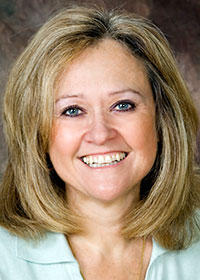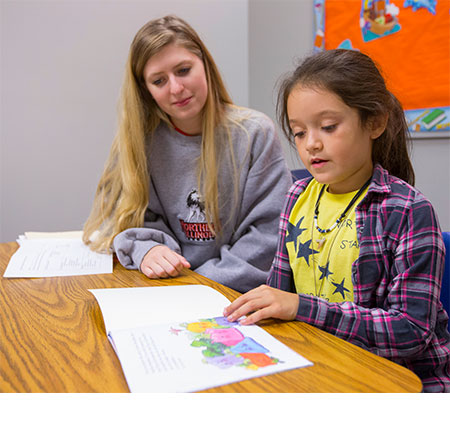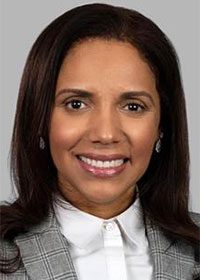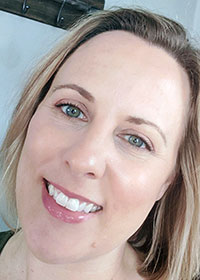
During her years as a Cuban living in rural Galesburg, Ill., Mayra Daniel impressed on her family the need for fluency in her native tongue of Spanish.
But that language was rare in this community of 35,000 in Knox County.
“Few spoke Spanish. I could go to the store, and speak to my children in Spanish, and everybody would turn,” says Daniel, a professor of Literacy Education in the NIU Department of Curriculum and Instruction. “Now, you go to Walmart, and everybody speaks Spanish. The demographics are different.”
Indeed, nearly 80% of bilingual learners currently in the United States are of Latino descent.
Their Spanish communication, meanwhile, varies by the linguistic idiosyncrasies of the countries their families originally called home, whether it’s Mexico or the nations across Central and Latin America.
Some who immigrated here at older ages bring high levels of academic literacy in Spanish.
Others who were born here, began preschool or kindergarten in Illinois, often moved back to their families’ home countries, and then fell behind in their studies when they returned to the United States tas they faced the challenge of “interrupted schooling.”
For U.S. teachers, this multicultural and plurilingual shift heightens the need for effective and meaningful preparation in English as a Second Language and bilingual education – programs the NIU College of Education has offered for years.
To Daniel, though, the mandate is just as great if not greater for teachers who can support Spanish-English biliteracy in bilingual, dual-language settings.
LTIC 525, a new course Daniel developed with CI colleague James Cohen and launched this fall, accomplishes just that.
 “We are not progressive enough in the United States. We have not faced the fact that we are a multilingual nation,” Daniel says. “This is a response to that.”
“We are not progressive enough in the United States. We have not faced the fact that we are a multilingual nation,” Daniel says. “This is a response to that.”
Offered in partnership with DeKalb Community Unit School District 428 and Elgin U-46, the LTIC 525 classes taught exclusively in Spanish by Assistant Professor David Nieto emphasize advocacy for the biliteracy education of emergent bilinguals.
Participating students – 25 current teachers from DeKalb and 25 from Elgin, all of whom are Spanish-English bilingual – will prepare and deliver lessons that reflect research-based approaches to Spanish literacy across the disciplines.
Classes are taught during Tuesday evenings for DeKalb and Thursday evenings for U-46; both districts are paying tuition for their teachers and providing in-district classroom space for face-to-face meetings.
Getting here has been a longtime ambition for Daniel.
“Ever since I came to DeKalb in August 2003, I have wanted my department to offer some courses such as LTIC 525,” she says.
“We offer all of our courses in English, yet we have so many teachers working in dual-language programs, and to be able to be highly qualified teachers, they need to have high levels of academic mastery in Spanish,” she adds, “and the conversation about the pedagogy – the methods that we use in classes – ideally would take place not just in English but also Spanish.”
Annette Acevedo, director of the English Language Learners Program in U-46, shares Daniel’s goal.
Her district serves nearly 12,000 dual-language students from preschool through 11th grade. Although teachers in those classrooms are bilingual, she says, some were born, raised and educated in the United States without ever taking courses in Spanish literacy as part of their college degree programs.

“It’s been a course we’ve been trying to bring to U-46 for several years, even before I started in this role, and I’m starting my sixth year,” Acevedo says.
“Dr. Cohen had hoped it would get funded through federal grants, and when it didn’t, I met with Dr. Daniel and Dr. Cohen to see how we could bring it to U-46 using Title funds,” she adds. They presented me with a draft syllabus, and we made the decision to pursue it and make it happen.”
Amy Crook’s reasons mirror Acevedo’s.
“Teachers have been asking for coursework in this area for years. They want to feel more proficient in implementing bilingual literacy in their classrooms,” says Crook, coordinator of Bilingual Programs in DeKalb.
“Currently, our teachers leave university having taken a course on literacy in English, and a bilingual or ESL methods class, but nothing that is extremely targeted to bilingual literacy,” she adds. “This course is taught in the Spanish language. That elevates the power of the target language and gives us, as educators, a chance to practice our languages at an advanced level.”
Spanish-speaking students in those districts are the main benefactors, however.
Teachers with LTIC 525 in their toolkits can differentiate their instruction to address oral and written language with their students and, in doing so, help them to access new dimensions of authentic understanding.
Children who can read Spanish rather than just speak Spanish can consume literature written in Spanish and not translated into English and, through it, comprehend the histories of their people.

And with teachers who combine pedagogy in the rules of language, while nurturing natural, human instincts for developing language, students can engage in a give-and-take process to learn different-but-the-same words and phrases.
“Our error in the past – and I can say that freely – is that Spanish in the United States has so much been taught from a kind of a duplicate of how we teach English, and that’s not how learners acquire biliteracy in Spanish and English because the language development is different,” Daniel says.
“We talk without thinking about it. If we have to think about what we’re saying, then call that ‘monitoring’ – we’re trying to come up with the words. Second language development is multifaceted” she adds.
“This is why teacher-modeling is so important. As a teacher, if I’m talking to you in Spanish, and I sense that you’re not coming up with the right word, I might introduce that word. Or, if you say a word to me, but I think there’s a better one, I say it back to you. I model it.”
Daniel also is excited by the backgrounds of the teachers enrolled in LTIC 525.
“Mexicans, Puerto Ricans, Peruvians, Cubans – we have all of these in our area, and they’re going to be hearing different forms of expressions in LTIC 525. That will help them grow,” she says.
“For the most part,” she adds, “we have teachers who are immigrants to the United States, and then we have folks born right here in the U.S. who grew up, say, in Pilsen, who speak Spanish but learned Spanish in the cradle and may not have attended bilingual schools themselves.”

